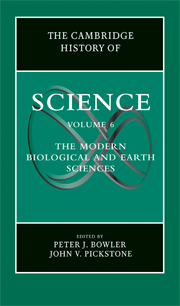33 - Popular Science
from PART IV - SCIENCE AND CULTURE
Published online by Cambridge University Press: 28 November 2009
Summary
Much recent historical work has focused on the role played by popular science in nineteenth-century culture. This was indeed a period when major developments took place in the way science was related to the general public, but we must beware of the assumption that the growing specialization of science at the end of the century created a situation that has continued unchanged to the present. In this chapter, I take up some of the themes explored by authors writing on the nineteenth century and trace them to the present, especially with regard to keeping up the pressure on an older view of science popularization that most historians now find unsatisfactory. This is the “dominant” view of popularization, which came to the fore in the mid-twentieth century, according to which science is done by a specialized elite and the results are then simplified for transmission to a largely passive public by intermediary science writers who may not be scientists themselves but who have the interests of the scientific community at heart. Few now accept this “top-down” model as an adequate representation of the complex interaction between science and the public, and this chapter will try to show why. In effect, we shall see that the more complex situation that prevailed during the nineteenth century was temporarily and only partially eclipsed by the efforts of the scientific profession to adopt a more isolationist position in the early and middle decades of the twentieth.
- Type
- Chapter
- Information
- The Cambridge History of Science , pp. 622 - 634Publisher: Cambridge University PressPrint publication year: 2009
References
- 1
- Cited by



